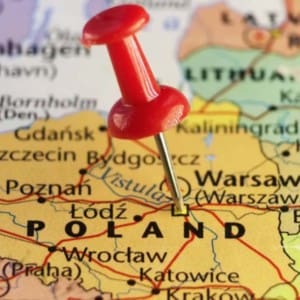As Klemens von Metternich, the former chancellor of the Habsburg Empire, reportedly said, “Asia begins on the road east from Vienna.”
This statement is representative of how 19th-century politicians in the monarchies of the time thought about the Central and Eastern European region.
The situation has not changed since then. The European Union has now come forward with a summary of the list of people appointed to fill the leadership vacancies in the community’s administration this year. If you think it’s a dry read, you’d be very wrong. True, it is not an adventure novel, but it is very instructive.
There is not a single Central and Eastern European (CEE) official on the list. All the important positions are thus to be filled by Western European candidates. Last year, the same happened. The situation was not much better before, because in 2022 and the year before, only 2 and 4 percent of candidates came from CEE countries and were given the opportunity to occupy an important EU position.
[pp id=113364]
In fact, this part of Europe has been discriminated against since it joined the Community. Let us recall what happened in January 2009. A “gas war” broke out over a settlement dispute between Moscow and Kyiv. Russian state-owned Gazprom therefore cut off the gas pipeline to Ukraine, but this also meant that Hungary and the neighboring countries were denied access to Russian gas. Hungarian gas storage facilities were full, but there was a crisis in Slovakia. Hungary was willing to help its northern neighbor, but there was a problem. There was no gas pipeline between the two countries.
To prevent similar incidents from happening again, the EU put a plan in place. It gave money to member states to build gas pipelines between them. There were already six such pipelines between the Netherlands and Belgium, but just in case, the two Benelux countries were given money to build a seventh connection. Hungary and Slovakia did not have a single pipeline, and both countries received money to finance one pipeline.
No one should be surprised then that people from Central and Eastern European countries feel like second-class EU citizens. The EU leadership has made no secret of the fact that it does not consider the less developed countries to be equal partners with the “big ones.” As we have already seen in the above-mentioned example, a group of first and second-class states has emerged. But this could not be institutionalized as such, the story had to be wrapped up. So, they started talking about a multi-speed Europe.
This was precisely the Western countries that, after the global financial crisis of 2008, did not want to hear any more about the disbursement of funds to help the Central and Eastern European countries catch up. Of course, this would also mean that, as the countries of our region would obviously be put on the “low-cost” wagon of the EU train, the gap between East and West would be preserved.
Fortunately, this “change of gears” has not yet taken place, but that does not mean that the concept has disappeared from practice.






